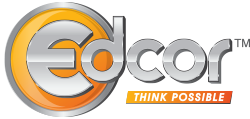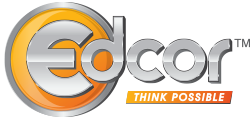Creating a culture of learning is a best practice that will bring multiple advantages to businesses. As technology creates new skill demands and the pandemic-related economy brings new challenges to product and service deliveries, companies are discovering that they need workers who are prepared to learn and apply new knowledge. Creating a culture of learning doesn’t have to mean creating something new. Creating a culture of learning can be imbedded into best practices for giving employees feedback.
Ken Vaughan, President of business strategy consulting organization New Horizon Partners, Inc., identifies three steps for effective feedback. These are to recognize a specific action or behavior, identify the impact of the action or behavior and to set expectations for future actions or behaviors. Each of these steps can be an effective part of encouraging employees to develop an education plan, nurturing talent within a company, and reaping the benefits of a company culture of learning.
Recognition of an employee completing a course, earning a certificate or starting a degree program is important feedback that will establish a culture of learning. It acknowledges that an employee is taking positive action to prepare for future employment demands. A Pearson study shows that 72 percent of adult learners believe they will need more education to keep up with their fields and 60 percent believe technology will make their jobs significantly different. Positive reinforcement of employee initiative and action to further their education is step toward creating a culture of learning.
Identifying the positive impact of employee higher education pursuits on reaching company goals also helps establish a culture of learning. Employees will see how their actions affect their own job performance as well as reach company goals. There are several examples of how this benefits employers and employees. Identifying new skills and knowledge that are necessary for career growth creates a career framework for employees; employees will be part of the company growth and development as they develop their own talents. Connecting education to work gives employees with career management tools and helps them develop skills and talents that connect to career opportunities.
The impact of employee higher education pursuits can help the company reach goals that are relevant to employees. For example, today many employees are concerned about issues of diversity, inclusion and social justice. Many employees are facing additional stress in their lives due to complications of COVID-19, childcare, and additional caregiving responsibilities. Promoting use of tuition assistance benefits to establish a culture of learning can benefit both employees and employers. A culture of learning shows that employers value a diverse and inclusive workforce by offering opportunities to all. It shows that a company is working to be part of the solutions to current problems. This means that businesses can retain qualified employees. When employees recognize their employer as part of the solution to long-term problems, and see opportunities for growth, they are likely to pursue their career growth within their organization.
The third step to effective feedback, setting expectations for future actions, is an integral part of a culture of learning. Providing tuition assistance so employees pursue skills their company needs creates a culture of learning that benefits both employees and employers. “Investing in the Employee Lifecycle,” a Sumtotal report, says that employees who are encouraged to learn and develop themselves professionally are more creative and innovative. “By promoting a culture of learning, new ideas and skills will drive performance, putting organizations in a better position to adopt disruptive technologies and give them the ability to pivot with the rapid changes of the economy.”
By Kathleen Eischeid, Edcor Business Development Coordinator



